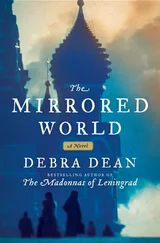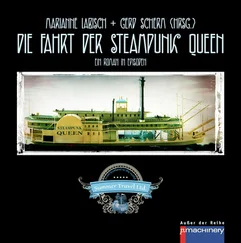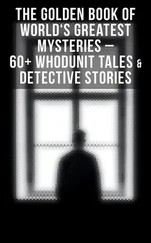She stands on a stage in the middle of the gallery with one arm extended to the door wherein entered her creator and master, Werner von Froeschner, a charismatic German scientist who before his renown as the Şehrazat’s creator had gained repute for his achievements in Genevan Galvanism, von Kemplen mechanics, and advances in scaling down difference engines while optimizing their performance. Because he insists on being the only one who operates the machine, he has stayed in the capitol and become the master of ceremonies to the diorama tour.
“Ladies and Gentlemen, welcome to Constantinople!” Waifs circle the tourists with tea and biscuits. “I know you are all eager to begin our trek, but first I want to introduce you to our guide.
“Now I know what you all must be thinking: here is just another Chess Player. But I assure you, this is no chess player. This…this is the future of—well, everything—but we get ahead of ourselves. But, today—for today—this is the future of travel, yes? How many times have you seen a Delacroix set outside of Constantinople and thought that you too would like to see that scene? Be a part of that exact scene? Ah, but you come to the Empire and you no longer see that exact scene.” There are a few agreements among the audience. “We live in an Industrial world now. There is not much room left for Romance—no, my friends, I am afraid the visions of Gêrome and Delacroix are quickly becoming nothing but dusty relics hanging on an aristocrat’s wall, and the experience you so longed for is ever fleeting…until now!
“You see, my friend Abdul Hamid is a traveler as well. He understands the romance that fuels such excursions, and as he visited my homeland he had his own vision—why not use all of this industry, all of this progress, to make a new thing of beauty? To make a new experience for the worldly traveler? To keep the East as it was without having to stay stuck in the past! His vision—the Şehrazatın Diyoraması !
“What you see before you is the marriage of art and science—the brainchild of some of the best minds in both the East and West. He hired me to oversee the Şehrazat’s design and construction. Osman Hamdi Bey, the Turkish painter who was one of the first here to embrace the French techniques and was so well acquainted with the style we needed, curated and created the synthesized images you will shortly see. Louis Majorelle, the French furniture maker who can often be found in a Constantinople café, was commissioned to design her body, but would you believe the Sultan himself—a great carpenter—constructed it!” He pulls her flowing costume away from her abdomen to reveal the elaborate Marjorelle cabinet made of juniper wood inlayed with beech and ivory crocuses. Although it is shaped in the voluptuous style of a de Milo torso, its realism is blemished by two oblong doors inlaid with bronze knobs, which von Froeschner opens to reveal the contents within: a plethora of mechanical intestines that intertwine so densely that one cannot fathom what any of it is for.
Smiling at the quizzical expressions of those who gaze inside the cabinet, he closes her up. “You see, inside here is the karanlık oda —the darkroom—the camera obscura that projects this tour. This,” he knocks on the torso, “this is the pride of the Ottoman Empire, for the diorama was devised and constructed by the Sultan’s favored photographer, Bora Fahir Çağlar.” He lets the skirts fall over the cabinet-torso and walks behind the Şehrazat with a melancholic expression. “Sadly, he disappeared before he could see his genius realized. No doubt, he would have marveled at the illusion he helped create.”
On that somber note, the waifs pull shut the black curtains. Someone from the audience exclaims: “Professor, you have evaded explaining how she works.”
Von Froeschner wags a finger. “Yes I have. With all due respect, ladies and gentlemen, if I explained how this marvel works, I would destroy the illusion you came here to enjoy. We, here, are not interested in bragging about our scientific discoveries, although we easily could do so and change the world. No, we are here to provide you with an experience—so please, worry not on technicalities, just enjoy your holiday.” He bends back down behind the Şehrazat, fumbling with her back as the room turns to pitch.
The tourists hold their breaths as a loud humming begins and exhale in delight as light composing the pale yellow and Prussian blue of Cappadocia shoots from her eyes and fills up the room. They forget about von Froeschner and the inner-workings of the machine, and journey forth into the fantasies of poets and painters.
In the Turkish Bath, grossly modeled after the infamous Ingres image, ladies and gentlemen are witness to voluptuous women lounging, dining, wading, and ultimately having their decadent ablutions tended to by maids.
Most all of the audience respond in wonder at the scene, some a little abashed to be witnessing it in mixed company, but there is one—there is always one—who mutters: “But that maid there with the perfume. She isn’t Moorish like the other maids in the scene.” And before their eyes, the blonde maiden who had been powdering another’s hair darkens. Other comments follow: “That eunuch’s hair is too auburn and her skin still pale.”
“Why don’t they look us in the eye?”
“They seem too thin. Not voluptuous like the Venus.”
And with every comment and observation, the image shifts, hair and skin brightens or fades, and the turbaned lute-player who faced away from the tourists now boldly strums while staring them all in the eye.
These effects are so subtle and undisruptive that the tourists who speak out are unsettled at first that the machine seems to hear them, while simultaneously pleased that the machine obeys them. A group jester exclaims: “Perhaps there is a human brain tucked away in her bronze-casted skull of hers, hey, von Froeschner?”
“If that were true,” von Froeschner retorts, “she’d still have human thoughts. Were that so, of what do you think they'd be?” The rhetorical question sinks into the merry group who are quieted by awe as the projection exits the Bath and enters onto a bustling marketplace, crosses the street, and enters a café filled with dozens of young bearded men in turbans and fezzes huddled to discuss news of the day in a great vaulted marble establishment with the walls decorated with Iznik tiles in the tulip fashion.
The shift is so seamless that the tourists are enthralled once again, and forget that with each critical utterance the projection changes into a more ideal vision—it is so imperceptible they forget they had even thought it, much less muttered it out loud. None of them consider that the image they see may be more romanticized now than it was before, and that the experience they are having is a false one. No, they came here to be comfortable. They especially disregard von Froeschner’s retort and have no more notions of the dark rumors that were broached in jest.
Had von Froeschner equipped the Şehrazat with a voice box, she could have addressed the jester herself. She—he—may no longer be able to see or speak, but he can hear and think. He dreams what he can no longer experience. Sometimes, when he hears the tourists ask von Froeschner whether he—she—is “quite the storyteller like her mother, Scheherazade?” an allusion much encouraged by the scientist, he thinks his retort: my mother died of consumption in Girit and told Christian stories to her older children while bedridden, and she named me Nikos Antonakis , not Bora Fahir Çağlar, not Şehrazat.
But he cannot tell the tourists that Bora Fahir Çağlar was a deceit, and instead continues to project the falsehoods that most interest them.
Читать дальше












